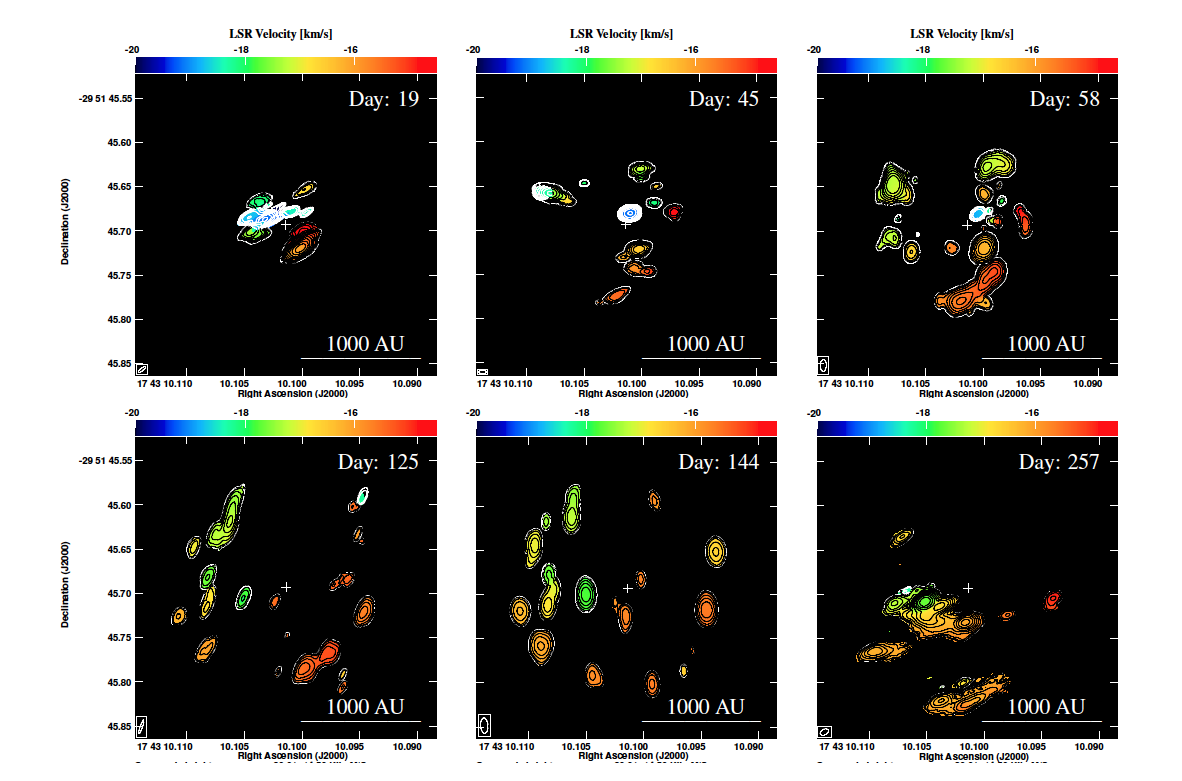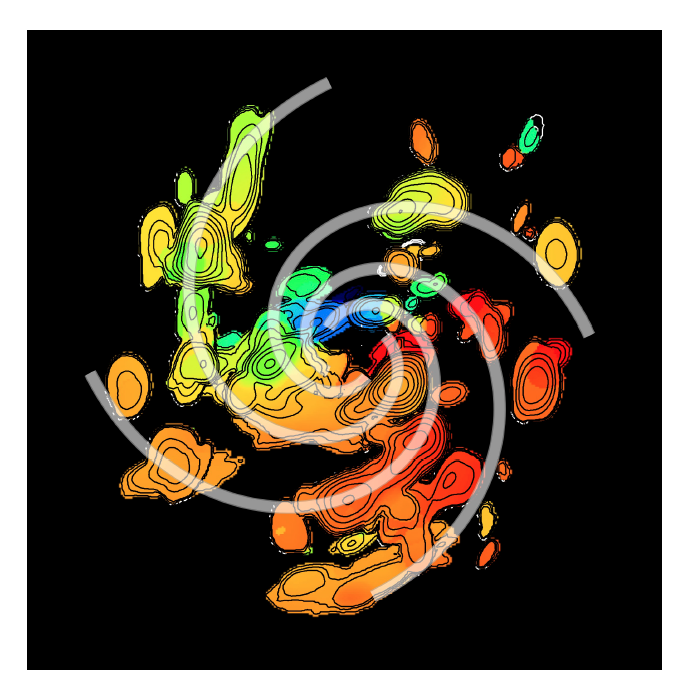
A Keplerian disk with a four-arm spiral birthing an episodically accreting high-mass protostar
Methanol masers at 6.7 GHz have been frequently targeted by VLBI users for their bright emission and multiple uses in radio astronomy. In addition to their uses in trigonometric annual parallax measurements, it is their reliable and exclusive association with intermediate- and high-mass protostars which make them a favourite maser transition among star formation astronomers investigating the higher mass regimes. VLBI images of the 6.7 GHz methanol maser often show rings of up to 100s of AU around protostars, or arcs of maser clouds, or seemingly random distributions. However, since this maser requires stellar heating in order to produce maser emission it is never far from the central mass, making it an excellent tracer of the inner regions (within about 10^3 AU) of high-mass protostars. In the past decade, evidence has began to emerge that massive stars accrete material from a surrounding disk and that this accretion is permeated by ‘bursts’ where, for a short period, the flow of material onto the protostar spikes. These accretion bursts are not exclusive to the high-mass stars, rather, they have been known in the low-mass star formation framework for several decades, with FU Orionis (“FUors”) and EX Lupi (“Exors”) being the first studied burst varieties. It is only since 2016 that this phenomenon has been observed to operate at the high mass regime. Since then several more accretion burst events were seen, the majority of which exhibited a flare of the 6.7 GHz methanol maser, thereby adding accretion-burst-tracing to its list of utilities. The question of whether high-mass protostars can have accretion bursts like their low-mass counterparts has been laid to rest. The questions of how and why such bursts occur are now the focus of astronomers in this field. A stable basis of theoretical groundwork already exists, which points to gravitationally unstable accretion disks developing spiral instabilities which funnel material down to the protostar in clumps, leading to accretion bursts. Following the flare of 6.7 GHz methanol maser emission in G358.93-0.03-MM1, a high-mass protostar visible from Southern and Northern VLBI arrays, a series of target of opportunity VLBI observations were conducted, comprising a ~9 month imaging campaign using the EVN, VLBA, LBA and EAVN (Fig 1).

The results captured an unexpected phenomenon. As accretion energy in the central (<50AU) region dispersed outward through the disk it ignited maser emission at ever increasing radii in a series of concentric, and imperfect, rings. The propagation of this energy was subliminal and far faster than the rotation speed of the disk, meaning that the 6 VLBI images returned by the campaign could be concatenated to produce a sparsely sampled, milliarcsecond-scale map of the spatio-kinematics of the accretion disk around G358.93-0.03- MM1. This technique was termed ‘heat-wave mapping’. The map, shown in Fig 2, revealed an almost face-on disk with substructures and an overall velocity gradient in the NW-SE direction. The kinematics of a position-velocity analysis turned up a precise Keplerian rotation profile with an enclosed mass of about 10 Mo (consistent with SED analyses which were also undertaken in response to the accretion burst news). The most striking finding was the appearance of four, rotationally symmetric, logarithmic spiral arms wrapping around the protostar and covering the full disk surface from 50 - 1000 AU. The number of arms, their pitch angles, and their logarithmic relation to radius matched the expected characteristics of a spiral pattern caused by gravitational instability. The characterisation of the spiral arms was performed by two separate analysis methods and robustness was confirmed by a repeating the analyses on randomly generated data which detected no substructures.

The VLBI campaign of G358.93-0.03-MM1 elegantly linked accretion through a Keplerian disk, gravitational instability, and the bursting nature of accretion, into the high-mass star formation model - all within a single high-mass protostar target, observed in a single maser transition. This result was achieved thanks to the participation of no less than 25 radio telescopes, three teams of correlators, and dozens of operators and facilitating staff who’s contributions are often under-celebrated but certainly deeply appreciated by the authors of this work.